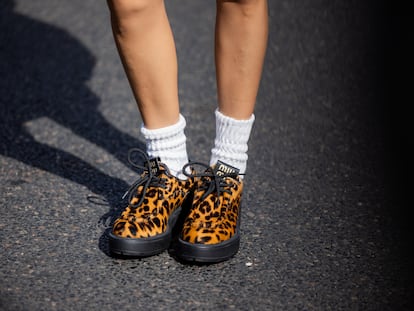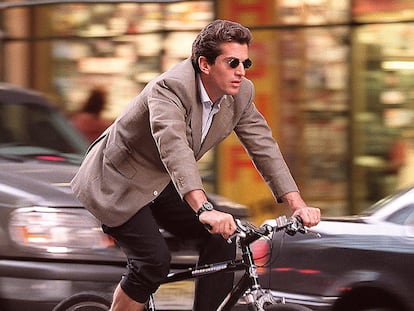From Brando to ‘The Bear’: How a simple white T-shirt has shaped masculinity for 100 years
It cuts across generations and social classes and can be combined with almost anything. The length of its sleeves and the tightness of its chest has marked the style of celebrities (and anonymous people) for decades
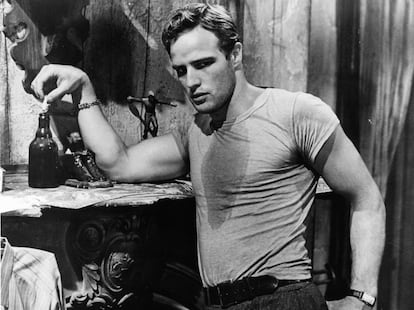
When it came to turning a very young Marlon Brando into the brutal Stanley Kowalski in Tennessee Williams’s 1947 play A Streetcar Named Desire, costume designer Lucinda Ballard was inspired by the sweaty, dirty, ditch-digging workers who toiled under the city sun. Only she downsized the outfit: she dressed Brando in a skintight T-shirt and squeezed him into jeans that showed off his buttocks and thighs like a second skin. The actor was understandably thrilled with what he saw in the mirror. He had before him a sexy, hyperbolically masculine image that would outshine Jessica Tandy, the actress who played the lead character, Blanche DuBois. Four years later, in the film version directed by Elia Kazan — where Tandy was replaced by Vivien Leigh — such tightness was considered immodest, so Brando’s jeans were replaced by baggy trousers. The T-shirt, however, was kept to emphasize the character’s voracious sexuality.
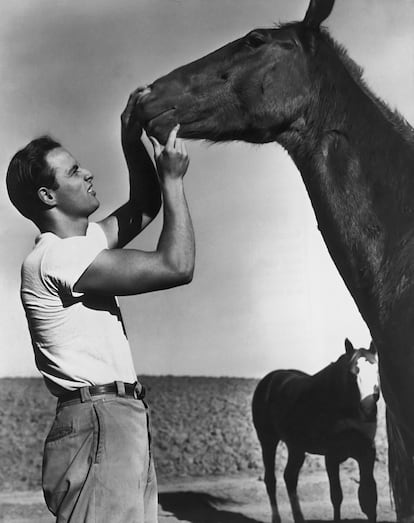
That would be the unofficial start of a trend. The T-shirt, which until then had only been used as underwear, was given a passport for external use. In return, it remained associated for a long time with the working classes and the counterculture. It took several decades for the plain white short-sleeved men’s T-shirt to become the stuff of posh people. Today it represents a space of resistance to the baroque style of clothing, the logomania and the ostentatious glitter that plague us, as the designer Simon Porte Jacquemus recently demonstrated with his choice of clothing to attend the prelude to the Paris Olympic Games organized by the LVHM Group. But reaching this triumph of elegance that is at once minimalist, relaxed and sensual has required a long road.
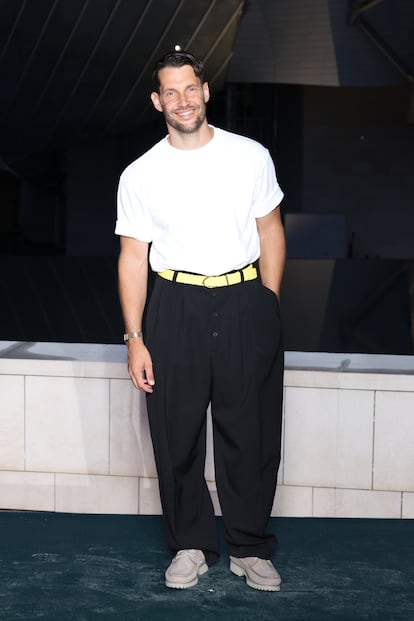
Back in the 19th century, Western men wore a single garment of varying lengths under their clothes that covered their torso and legs. It was not until the end of the century that, for reasons of comfort, underpants were separated from the top. American Marines began wearing both garments in the Spanish-American War, and soldiers in other armies did so shortly afterward, after which the custom spread to different layers of society. Some professionals subjected to particularly harsh conditions, such as miners, construction workers and longshoremen, were allowed to wear externally what was by then already an essential component of men’s underwear. And at that point came its supposed fall from grace. There is a legend that, in 1934, sales of undershirts plummeted due to a scene in Frank Capra’s film It Happened One Night in which Clark Gable removed his shirt, revealing that his torso was naked underneath. Although everything indicates that the story is apocryphal, it reveals that things were beginning to change.
A long decade elapsed between this relaxation of the obligation to wear a T-shirt under other garments and its definitive visibility on an equal footing with the rest of one’s clothing. It took the advent of World War II, during which the American army once again equipped its troops with T-shirts. Many of them wore these same T-shirts in their spare time, now clearly visible and combined with the trousers of their military uniform. The look was martial yet casual, a winning combination.
Brando, and also James Dean, are often cited as pioneers of the trend in Hollywood. But it is fair to remember that, as early as 1945, Gene Kelly appeared in a T-shirt in Anchors Aweigh, one of his great cinematographic successes, in which he played a sailor. The garment was white in a scene in which he wore it as underwear, accompanied by cotton boxer shorts, and he wore another one with light blue stripes in the most memorable moment of the film, when the actor and dancer performed a musical number with Jerry the mouse.
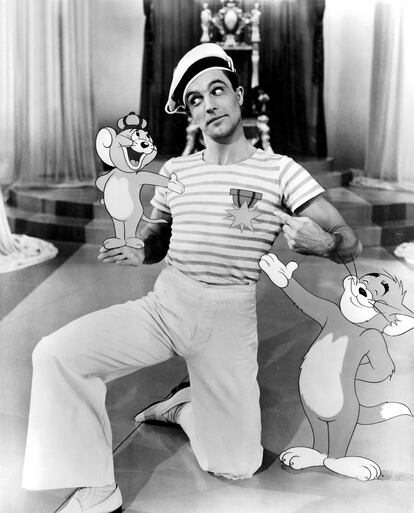
On screen, Kelly followed a strategy of wearing the most casual clothes that decency allowed — sweatshirts, khaki pants, caps and canvas sneakers, which are perfectly acceptable in our times — to differentiate himself from the stars of the previous generation, especially the impeccably suited Fred Astaire.
In the 1950s, Brando led the way, not only with A Streetcar Named Desire (Elia Kazan, 1951), but also with The Wild One (László Benedek, 1953), where he lived up to the title of the movie with his Hell’s Angel looks that combined jeans, a perfect black leather jacket, a tilted visor and, again, a T-shirt. Two years later, James Dean set the trend in Rebel Without a Cause: it is symptomatic that, in the first scenes of the film, his character appears in a jacket, shirt and tie — which was how any middle-class young man dressed at the time — and only when he chose to consciously assume his rebelliousness did he change to a white T-shirt and red jacket. The same effect can be seen in a famous photo by Eve Arnold showing Paul Newman at the Actor’s Studio in 1955, wearing a white T-shirt, dark trousers and loafers, standing out like a beacon in a sea of tweed jackets.
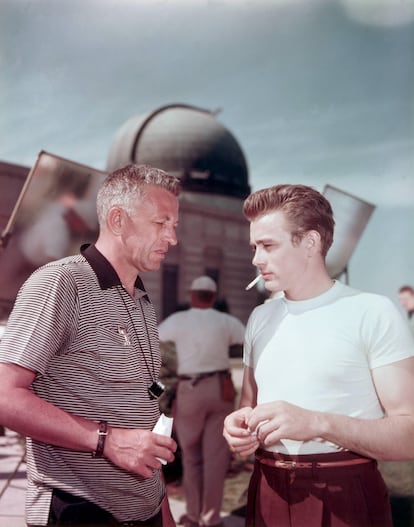
Other sex symbols would later take over, from Steve McQueen to Alain Delon (who, in Visconti’s Rocco and His Brothers, had the excuse that his character was a boxer). By the 1960s, the white T-shirt had become popular as a casual garment for holidays, sporting excursions and general leisure, as demonstrated by the fact that John F. Kennedy — interested in promoting himself as an athletic and sporty president — allowed himself to be photographed in this guise. In the following two decades, rebellious youth of both sexes adopted the T-shirt, occasionally with printed political slogans, to differentiate themselves from more conformist sectors that remained faithful to shirts or, at most, evolved towards the polo shirt with a collar that originated in tennis.
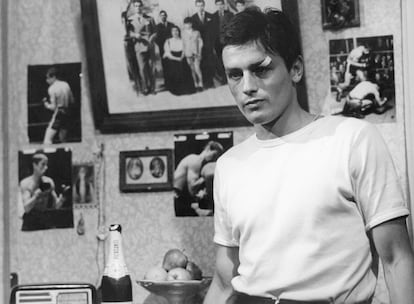
In contrast, in the 1980s, with the proliferation of dark or explosively colorful clothing and the adoption of tights, chains, safety pins and other fanfare inherited from rock and punk subcultures, the simple white T-shirt conveyed a reassuring sobriety. The lead characters of the TV series Miami Vice made another qualitative stylistic leap by popularizing a previously unthinkable association, that of the T-shirt and the suit, which in its day aroused both fury and hostility.
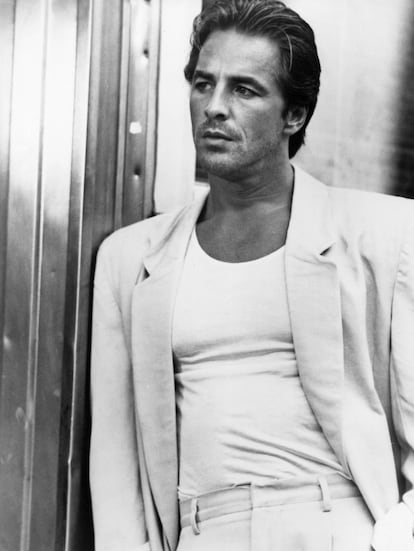
Since the 1990s, among well-off young people — or those who aspire to be so, with series such as Beverly Hills, 90210 as their references — the white T-shirt has appeared under loose shirts that might display a Ralph Lauren-style monogram. But it has also remained part of the more minimalist male repertoire, with followers such as Bruce Willis and Brad Pitt. In recent times, the stylists of the series The Bear have taken advantage of the iconic power of the white T-shirt by dressing its main actor, Jeremy Allen White, almost exclusively in it during the first season. In response to the speculations that have arisen on this subject, the costume designer Cristina Spiridakis confirmed that for Carmy Berzatto, Allen White’s character, she had opted for the German brand Merz b. Schwanen, whose catalog offers different types of collars — including open ones with mother-of-pearl buttons, reminiscent of the underwear still worn at the beginning of the last century — colors, thicknesses and sleeve lengths, and which stand out for their high quality and their corresponding elevated prices.

The white T-shirt has proven its ability to adapt to the times by changing its configuration only slightly. It remains an unbeatable option when combined with jeans or chinos — both inventions of the late 19th century that have gone from modest origins to become standards that unite all social classes — as well as with Bermuda shorts or more formal trousers, with pleats or even stripes. Wearing it with the bottom untucked or tucked into the trousers is a matter of occasion and personal preference. Much has been written about the ideal body length, which should not be excessive, in order to stylize the legs and avoid wrinkles at the abdomen or waist. As for the sleeve, it should ideally run between half and three quarters of the way from the shoulder to the elbow. In recent seasons, measurements seem to have been imposed that far exceed the limit of this last joint, as in other times the extra-short sleeve has been in force. However, any excessive following of fashions plays against the iconic and timeless nature of the garment.
Continuing with fashion trends, another use that has burst onto the scene in recent times is the use of loose cotton men’s boxers as outerwear, for both men and women. If the trend is confirmed in the coming seasons, we would be witnessing the repetition of a well-known story: perhaps very soon boxers will become the new white T-shirt.
Sign up for our weekly newsletter to get more English-language news coverage from EL PAÍS USA Edition
Tu suscripción se está usando en otro dispositivo
¿Quieres añadir otro usuario a tu suscripción?
Si continúas leyendo en este dispositivo, no se podrá leer en el otro.
FlechaTu suscripción se está usando en otro dispositivo y solo puedes acceder a EL PAÍS desde un dispositivo a la vez.
Si quieres compartir tu cuenta, cambia tu suscripción a la modalidad Premium, así podrás añadir otro usuario. Cada uno accederá con su propia cuenta de email, lo que os permitirá personalizar vuestra experiencia en EL PAÍS.
¿Tienes una suscripción de empresa? Accede aquí para contratar más cuentas.
En el caso de no saber quién está usando tu cuenta, te recomendamos cambiar tu contraseña aquí.
Si decides continuar compartiendo tu cuenta, este mensaje se mostrará en tu dispositivo y en el de la otra persona que está usando tu cuenta de forma indefinida, afectando a tu experiencia de lectura. Puedes consultar aquí los términos y condiciones de la suscripción digital.
More information
Archived In
Últimas noticias
Most viewed
- Reinhard Genzel, Nobel laureate in physics: ‘One-minute videos will never give you the truth’
- Oona Chaplin: ‘I told James Cameron that I was living in a treehouse and starting a permaculture project with a friend’
- Pablo Escobar’s hippos: A serious environmental problem, 40 years on
- Chevy Chase, the beloved comedian who was a monster off camera: ‘Not everyone hated him, just the people who’ve worked with him’
- Why we lost the habit of sleeping in two segments and how that changed our sense of time

